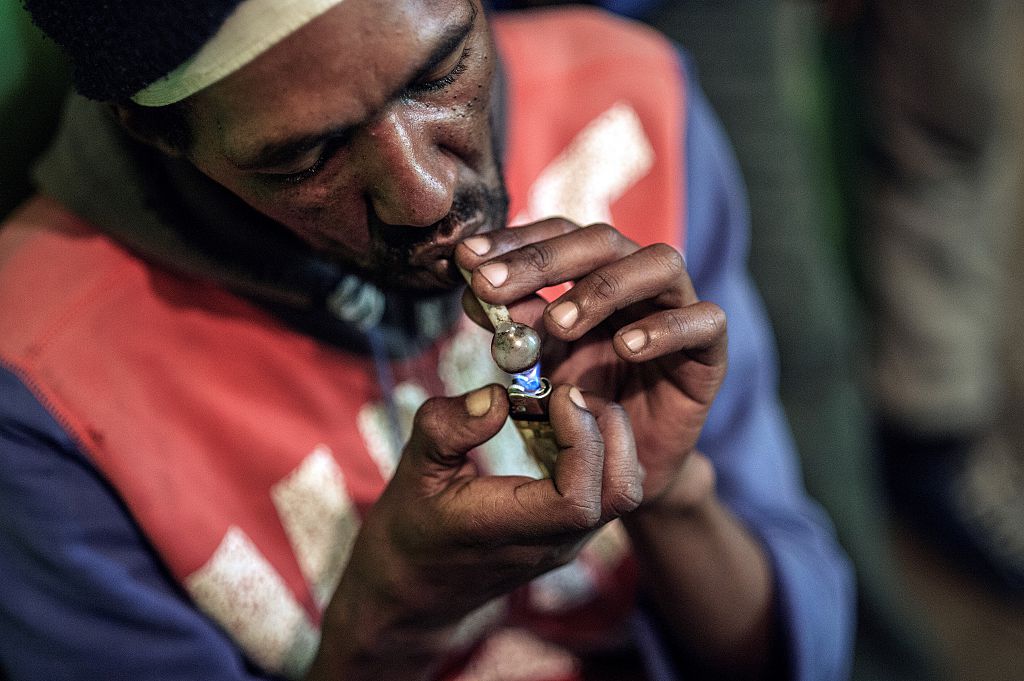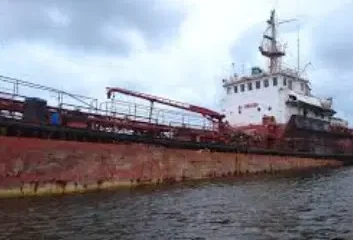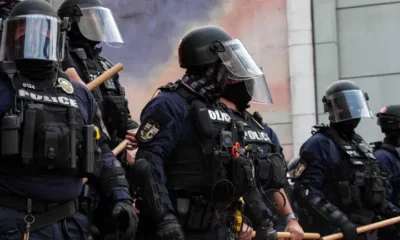African News
Massive Meth Bust Highlights South Africa’s Growing Drug Crisis

An unfamiliar, chemical-like odor wafted from a farm in the tiny, rural eastern South African town of Volksrust. Suspicious residents alerted authorities, who raided the farm in mid-September and uncovered a crystal methamphetamine laboratory and drugs worth $20 million.
Authorities found industrial manufacturing equipment along with scales and lunch boxes filled with meth — known locally as “tik” — at the scene. They arrested five Mexican nationals and the farm’s caretaker, while two others escaped. Volksrust is in the Mpumalanga province, about 225 kilometers southwest of Johannesburg.
The bust, the third such operation discovered in South Africa in recent years, highlights the country’s growing drug crisis and underscores why it is considered one of the world’s largest crystal meth consumer markets.
It is also a sign that Mexican drug cartels are now “franchising” industrial-scale meth production within the country, according to Julian Rademeyer of the Global Initiative against Transnational Organized Crime.
“The Mexican nationals are moving closer to their users,” Rademeyer said on Johannesburg’s 702 Drive talk radio show. “South Africa has one of the largest — if not the largest — consumer markets for crystal meth, for tik, in the world. They’ve begun setting up these industrial-scale facilities on remote farms, rural communities. This is essentially the modus operandi that they followed in the past in Nigeria, then in Kenya and now today.”
The cartels’ presence raises fears of escalating violence as disputes over territory are fueling gang fighting in the Guateng and Western Cape provinces, Rademeyer added. Meth use in South Africa has proliferated since the mid-1990s, driven initially by suppliers of precursor chemicals to local gangs by Chinese networks. However, the market has since shifted dramatically.
“Over the last decade, we’ve seen a significant shake-up of the tik and meth market in South Africa,” Rademeyer said. “While some meth is still produced locally, there are essentially two major strains entering the country.”
One strain is commonly known by users as Pakistani meth, which originates in the border regions of Afghanistan and Pakistan. The second is known as Mexican meth, which has been manufactured in industrial-scale laboratories that Mexican cartels established in Nigeria, Namibia and other areas.
According to Rademeyer, the Mexican nationals who have been arrested are probably scientists sent by cartels, likely the Sinaloa cartel, which has established itself in more than 50 countries, and the Jalisco New Generation cartel. He expects the local meth market to expand and that the cartels will seek partnerships with local criminal enterprises.
“If you look at the Nigerian model, they teamed up with Nigerian groups, some of which are believed to be involved with the Mexican cartels in South Africa,” Rademeyer said. He added that the cartels will also likely seek local distributors, look to train locals in meth production, recruit farmers and use people with access to places to discreetly manufacture the drug.
South Africa’s drug problem is not limited to meth.
Drug tests conducted by clinics in South Africa in December 2024 detected fentanyl, a powerful synthetic opioid, in younger people in the Eastern Cape and KwaZulu-Natal. The drug, which produces intense, short-term euphoria, is about 100 times more potent than morphine and 30 times stronger than heroin. It is commonly mixed with cocaine, heroin and meth. It has also been found in the country’s wastewater.
The Journal of Illicit Economies and Development reported that 400,000 South Africans use heroin daily at a cost of about $1.8 million. The combined value of the country’s cocaine, heroin and methamphetamine market was $3.5 billion in 2020, the journal reported last year.
Analysts say addiction to drugs and alcohol is contributing to rising youth unemployment in South Africa. This fuels vandalism, violence, physical health and psychological issues. Imraan Muscat, a social worker at Mediclinic Crescent in the Western Cape province, said many young people turn to drugs not just to get high but also help handle stress, trauma and difficult emotions.
“Over time, this learned behavior rewires the brain, hijacking core survival systems — those linked to food, shelter and procreation,” Muscat said in a report by the Modern Ghana news website. “Ultimately, the relationship with the substance becomes more important than anything else. This shift occurs on both neurological and behavioral levels. In most cases, it also happens very insidiously.” (ADF)
-

 News17 hours ago
News17 hours agoFusengbuwa Ruling House rejects KWAM 1’s claim to Awujale throne
-

 News17 hours ago
News17 hours agoU.S. seizes Nigerian-owned supertanker over alleged crude theft
-

 News17 hours ago
News17 hours agoRecruitment of 50,000 Police Constables: PSC opens application portal
-

 Politics17 hours ago
Politics17 hours agoVote Buying: Why we’ve not charged those arrested in Anambra to court – INEC
-

 News17 hours ago
News17 hours agoFCCPC seals Ikeja Electric office over prolonged violation of consumer rights
-

 News16 hours ago
News16 hours agoAlleged N2.2bn fraud: EFCC arraigns ex-labour minister Ngige today
-

 News16 hours ago
News16 hours agoAfter refusing to defect to APC, Bayelsa deputy governor slumps, pronounced dead
-

 Business17 hours ago
Business17 hours agoPZ Cussons Drops Plan to Exit Nigeria, Other African Countries, Gives Reason


















